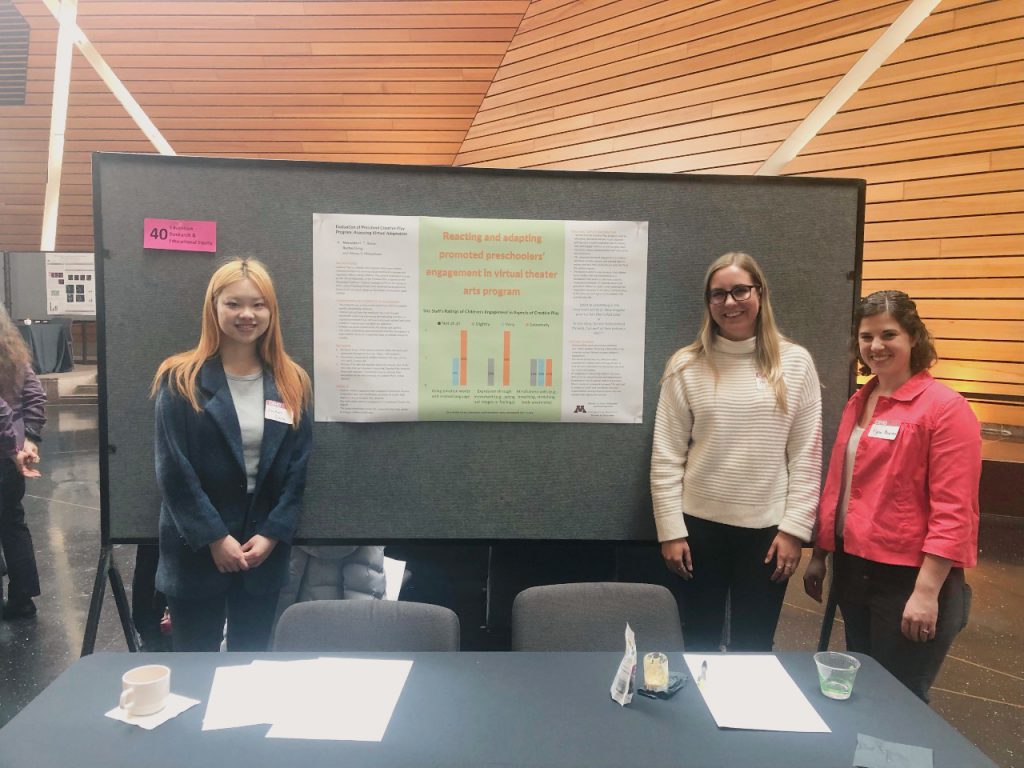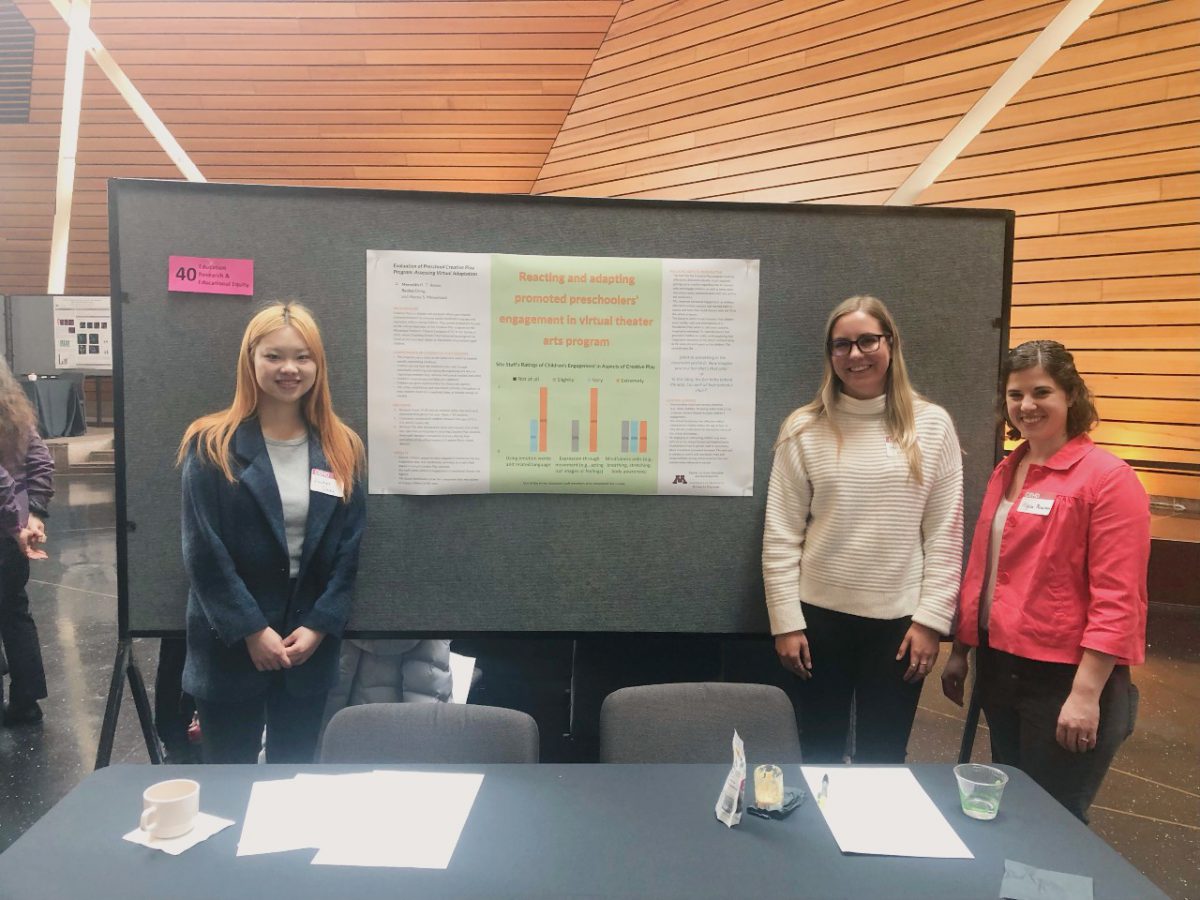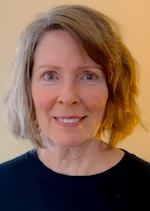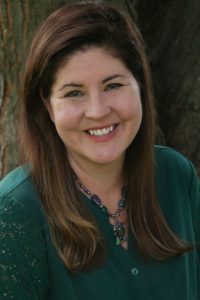Professional Development Specialist Kami Alvarez oversees the Trainer and RBPD Specialist Support (TARSS) grant as part of her role in the Minnesota Department of Human Services. In this Q & A, she shares her perspective on the professional development landscape for child care providers in Minnesota. She explains how the state’s professional development system for child care providers works. She also provides insight into how trainings are developed and delivered.
Thank you for taking time to share your perspective with our readers! You work in the Child Care Services Division within the Department of Human Services. Can you give us an overview of that unit’s work?
KA: We have two units within the Child Care Services Division. One unit oversees the Child Care Assistance Program. This program provides subsidies for child care to low-income families. The second unit is called Child Development Services (CDS). I work in CDS. We are primarily focused on quality measures. We oversee Parent Aware, which is Minnesota’s voluntary quality rating and improvement system for child care providers. We also serve child care providers in Minnesota by helping them access professional development and improve the quality of their programs.
My own work is focused on professional development for child care providers. Minnesota’s professional development system for child care providers was mandated in a state statute in 2007. So the state government has certain responsibilities to providers. The system was set up to help child care providers of many different types to reach their professional development goals. That can mean training, mentoring, consultation, and more. My team makes sure child care providers have access to those things.
What are the main reasons why child care providers seek out professional development?
There are three main reasons for providers to participate in professional development. The first reason is in order to obtain or maintain a license to provide child care. There are different license types that are issued by the Department of Human Services’ Office of the Inspector General. We often say that they’re the regulatory folks and we’re about quality. Achieving that license is a minimum standard.
When a provider is licensed, they need certain training. Licensing gives us the standards the training must meet: hours, topics, and so on. We design the training and for the most part we work with grantees who deliver the training.
The second reason is to participate in Parent Aware. Providers want to do their jobs well so that the kids they serve have more skills and more opportunities to learn. Parent Aware looks at raising the quality of child care so that children are ready for kindergarten. We have trainings for in-home providers and center staff that help raise program quality and help providers achieve higher Parent Aware ratings.
The third reason is that providers are seeking ways that they can advance their careers with short- and long-term professional development goals. Often, people join this field with no postsecondary education. We help them advance their careers, for example, by funding professional development advisors in all areas of the state. These career advisors sit down with providers and help them plan: “What training and education do I have? What are my goals? Where do I want to be? How do I get there? How do I fund it?”
CEED recently became the home of the Trainer and Relationship-Based Professional Development (RBPD) Specialist Support (TARSS) program. How does TARSS fit into your work?
The professional development team here at CDS makes grants to organizations that serve child care providers. We’re responsible for policies and fiscal management, and we help grantees develop procedures to serve child care providers. The grantees then directly provide services like training and coaching.
TARSS is one of these grantees. The program supports trainers and RBPD specialists—people like coaches, mentors, and classroom observers. They work directly with child care professionals, providing health and safety coaching, mental health coaching, professional feedback, and other important services.
Your background is in social work. What was the career journey that brought you to professional development?
I worked for many years as a social worker in nonprofits and then in child protection and welfare in county government. I have experience in adoption, home studies, and child care licensing. My bridge to DHS was that in 2008 I started working for the Minnesota child welfare training system for foster parents, social workers, and supervisors. I led foster parent training and curriculum development, all of which we did in house.
In 2016, I moved from that division to the Child Care Services Division to work on our state-owned curriculum. We’re responsible for more than 300 professional development courses that are delivered statewide. We fund and administer Develop, an online tool where providers can take courses and track their professional development. Our state-owned courses are available in Develop along with other training opportunities. I also work with the Child Care Aware training and delivery system. So I collaborate with trainers, course writers, and all of our grantees that work on regulating, approving, and delivering trainings.
Are there new courses coming soon in Develop that readers should keep an eye out for?
Yes, we will soon be offering a set of courses on trauma-responsive care that are designed for child care providers. Up until now, we have not had anything in our system that was specific to what child care providers can do around trauma-responsive care. I’m really looking forward to introducing these courses.
Do you develop the curriculum for courses like those?
In this case, I participated in a collaboration with the federal Office of Child Care. In addition to the federal workers, our committee convened people from 14 or so different states. We met over the course of about half a year to work on the curriculum. The Office of Child Care came up with a draft, and the rest of us helped shape and refine it. We also had input as to how it should be delivered in our states. So I am not the writer of this curriculum, but I helped create, shape, and Minnesota-ize it, you might say!
What are things you think about when designing a training or curriculum?
In instructional design for this audience, I have to be very mindful that the curriculum must be delivered statewide to all Minnesotans. What that means, in terms of the construction and content of a course, is that the activities, examples, and graphics have to be representative of the diversity of our communities in Minnesota. We design content with an equity lens to make sure that it’s going to be applicable in the metro, in rural Minnesota, on a reservation, in an urban community. We’re intentional and thoughtful about the different pieces that we put in—we’ve got to make sure that the information is useful and that it will actually be applicable. Providers don’t have a lot of time to participate in professional development each year, so we work hard to make sure they get what they need during that limited time.
I also think about empowering trainers, because in this field they may work with very diverse providers from different backgrounds. The providers also may have very different jobs. Center staff, family child care providers, center directors, substitute child care workers—these are really different roles. So when I think about a topic and how we talk about it, I make sure it is not specific to one type of role or one geographic location or one level of formal education. Often that means that trainers need to have multiple options to give them the flexibility to say, “Tonight I have a group of mostly family child care providers versus another role, so I’m going to present the information this way.”
The trainer has to gauge the room with a lot of emotional intelligence. A lot of times when we start out a training with icebreaker questions, it’s so that the trainer can figure out who is in the room. Then they can flex the content and activities while still maintaining the important points. This is very challenging work compared with something like training people to use a software program. Minnesota has a wide variety of communities, and a trainer can’t assume, for example, that their audience is college educated or that their first language is English. Meanwhile, these trainings are about topics that are serious in nature—health and safety, things like abusive head trauma or SIDS. So trainers have to ensure that the information is getting across.
Since your work is mandated by the legislature, do laws that get passed affect your work and impact what you do?
Yes, both federally and at the state level. On a day to day basis, there’s a regular cycle of the legislature. We’re a part of that, particularly when it has to do with changes to license types and training requirements. Often, the legislature asks for technical assistance from my unit to understand the professional development system, courses, and trainers. A lot of decisions are made based on what is in statute. So when a statute changes, I have to change our courses.
There are also different federal funding streams that come to our unit. The law tells us what we need to do with that money. Some funding for federal initiatives passes through state governments to grantees. Some work we accomplish in house. Whatever the case, we need to do the work and document it, and then it is audited both at the state and federal level.
Sometimes, federal funding has a broader description because it is distributed nationwide, and things look different in Alabama versus Alaska, for example. So the federal government says, “Here is what the money is for; you figure out how to do the work in Minnesota.” In those cases, we put on our thinking caps, come up with our best plan, and execute the plan, often through a grant contract. We monitor the work and report back to the federal government regularly: What did we do? What did it cost? What change did we accomplish?
Does the legislature consult you about legislation or changes to legislation that they are considering?
Yes, they often ask for fiscal notes, data, and technical perspectives. They might ask, “How much would it cost to implement this? How could we make this happen in a certain framework?” Sometimes they request data around the people we serve and how we serve them. They want to get a sense of the potential impact if they change something. Who will be affected? Who will not be affected? Sometimes they are considering putting forward a new policy, so they ask for statistics that give them a fuller picture of a proposal’s effects and how it will be carried out.
What do you do in your free time (assuming that you have any free time!)?
I’m a Girl Scout leader. My daughter, who is twelve, has been in Girl Scouts since first grade. I enjoy being outdoors and doing activities like archery and kayaking. I also like to travel—when we don’t have a pandemic! When we’re at home, we enjoy our two rescue cats.










